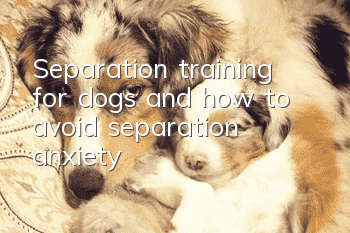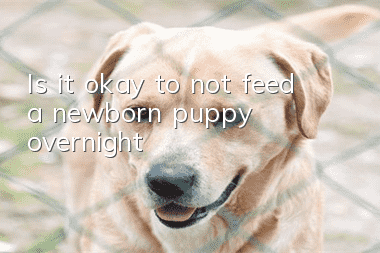Separation training for dogs and how to avoid separation anxiety

Many people think that puppies are both pitiful and cute. In order to let them adapt to their new homes as quickly as possible, they stay with the puppies when they first arrive. But the result of doing so will be exactly the opposite: if you are always by its side and give it excessive attention at the beginning, then when your life returns to normal and you cannot always accompany it, it will bring huge consequences to the dog. Disappointment can even cause separation anxiety.
1. What is separation anxiety
Most dogs enjoy the pleasure of chewing when they are alone at home and causing havoc; however, some will develop a real anxiety disorder-separation anxiety disorder. The main symptoms of separation anxiety disorder are: anxiety before the owner leaves (shortness of breath, pacing back and forth, drooling, trembling, depression and hiding in corners), not eating when alone at home, and often when the owner is about to leave. Started not eating.
Separation anxiety disorder usually occurs after a triggering event occurs. For example, when you move to a new home or your life routine undergoes major changes.
2. How to avoid separation anxiety
To avoid the occurrence of separation anxiety, it is best to conduct separation training from the first day your dog arrives home:
1. Frequently let the dog stay alone for a short period of time
The initial departure time should be shorter, preferably within 5 minutes. After the dog's reaction is not too strong, start to gradually lengthen the time, such as 15 minutes, half an hour, 1 hour, 2 hours, etc. In the first few days when your dog arrives home, conduct separation exercises like this frequently.
Practice "internal separation" first. Just put the dog in a room, then the owner leaves the room and closes the door. Let the dog get used to the fact that even if the owner is at home, he will not be with him all the time.
Then practice "external separation." Keep the dog in a room and the owner leaves the house. Through such separation exercises, the dog can know that the owner will not always be around, and that the owner will always come back after leaving.
2. Don’t greet your dog every time you leave
The owner's reluctant tone and expression will make the dog anxious about the upcoming solitude.
3. Don’t appear in front of the dog when it is whining. Wait for it to stop before entering.
If the owner comes back when the dog is whining, the dog will bark in the futureIt's getting worse and worse.
4. Let all "good things" happen when the owner leaves and comes back
It is best to arrange "good things" such as meals, games, and walks just after the owner returns, so that the dog will form a conditioned reflex of "mom leaves = good things are about to happen".
- When to train your dog to go to the toilet
- Causes of lipoma in dogs
- Common diseases of Corgi dogs
- How should a three-month-old German Shepherd be trained? Teach you how to train an obedient German Shepherd!
- What should I do if I don’t want to keep a dog? Come in and take a look if you don’t want to be fined!
- What to look out for when buying a Weimaraner puppy
- What symptoms does Teddy have that mean he has a cold?
- How to deal with dog trauma
- What to do if your dog gets stuck with a foreign object
- Early symptoms of parvovirus in dogs



